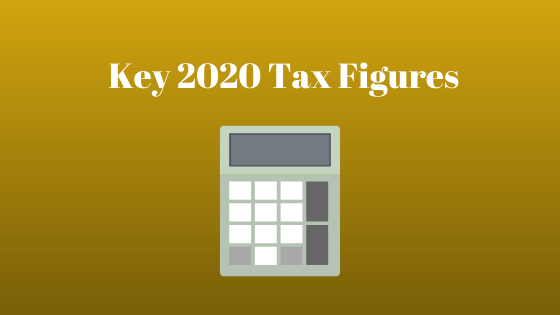Tax filing season is upon us. The IRS will start accepting 2019 electronically filed returns on January 27. Let us know if you need help or have any questions regarding 2019 filings. Also, keep in mind the new 2020 key figures and limits recently released by the IRS. Here is a breakdown:
2020 Retirement Planning
The contribution limit for employees who participate in a 401(k) or 403(b) increased from $19,000 in 2019 to $19,500 for 2020. The limitation for defined contribution plans increased in 2020 from $56,000 to $57,000. The annual compensation limit is increased from $280,000 to $285,000. The catch-up contribution limit for employees aged 50 and over who participate in these plans is increased from $6,000 to $6,500.
The limitation regarding SIMPLE retirement accounts for 2020 increased to $13,500, up from $13,000 for 2019.
For defined benefit plans, the limitation on the annual benefit is increased from $225,000 to $230,000.
The limit on annual contributions to an IRA remains unchanged at $6,000. The additional catch-up contribution limit for individuals aged 50 and over is not subject to an annual cost-of-living adjustment and remains $1,000.
Roth IRAs have annual income limits for those who want to contribute. In 2020, if your adjusted gross income exceeds $124,000 for single filers or $196,000 for married couples filing jointly, you won’t be able to make a full contribution directly to a Roth IRA. If this is the case, you might consider making a nondeductible contribution and then converting to a Roth. This is known as a “backdoor Roth” and has some other consequences to consider. Consult your CPA on this one.
2020 Social Security Wage Base
The Social Security wage base increased to $137,700 in 2020, which is up from $132,900 in 2019. This means the first $137,700 will be subject to the 6.2% Social Security tax. Medicare tax is uncapped, with a rate of 1.45%. Don’t forget the Medicare rate is 2.35% once wages hit $200,000 for single filers and $250,000 for married filers.
2020 Mileage Rates
The 2020 mileage reimbursement rate will be 57.5 cents per mile for business miles driven. This is down from 58 cents in 2019. Other mileage rate changes include 17 cents per mile driven for medical or moving purposes, which is down from 20 cents in 2019 and 14 cents per mile driven in service of charitable organizations, which is unchanged.
2020 Standard Deduction
A lot more filers took advantage of the standard deduction in 2018 due to the increased amounts. For 2020, the standard deduction for single filers will be $12,400, up from $12,200. It rises to $24,800 for married couples filing jointly, up from $24,400. If filing as head of household, the standard deduction increases from $18,350 to $18,650 in 2020.
2020 Health Savings Account
In 2020, you can save up to $3,550 if you’re an individual with self-only health coverage. That’s up from $3,500 in 2019. Accountholders with family plans can save up to $7,100 in this account, which is up from $7,000 in 2019.
2020 Annual Gift Limits
The annual exclusion for gifts is $15,000 for 2020, which is unchanged.
We hope this summary helps you plan for 2020 as you file your 2019 returns. Reach out to Rivero, Gordimer and Company should you have any questions.




